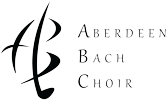In 1745, this time for the King’s Theatre, Handel composed two of his most ambitious oratorios to date, Hercules and Belshazzar, both with libretti by Jennens. He announced yet another subscription series with twenty-four performances planned. However, this went so badly, with audience numbers painfully low, that he gave only sixteen performances and was obliged to return money from ticket sales to some patrons. Miss Elizabeth Carter (1717-1806), a prominent London diarist and letter writer, wrote that “… Handel, once so crowded, plays now to empty walls in that opera house where there used to be a constant audience”. Following the collapse of this subscription series Handel never conducted oratorios again except during Lent and by invitation from Covent Garden.
In the spring of 1746, Handel visited the Earl of Gainsborough in Rutland for “quiet and retirement”. Further visits and extended stays are recorded to the Earl of Shaftesbury in Dorset, and the country seats of other aristocratic families in Bath, Cheltenham and Tunbridge Wells, whose favour Handel had previously found during his prosperous times in London. In April 1746, victory at the Battle of Culloden by the Hanoverian side over the Jacobites inspired Handel to write the oratorio Judas Maccabeus (from which comes the rousing chorus Thine be the Glory, Risen Conquering Son). From 1747, and seemingly at least partially out of retirement, Handel gave twelve oratorio performances per year during Lent at Covent Garden, invited by the theatre as a kind of composer/conductor emeritus. These were a mixture of revivals of earlier works, but also, with apparent renewed creative energy, a stream of new oratorios ensued: Alexander Balus (1748), Joshua (1748), Solomon (1749 – from which comes the well-known Arrival of the Queen of Sheba), Susanna (1749), Theodora (1750) and Jephtha (1752).
Other significant works from this time include the Music for the Royal Fireworks. This was commissioned for a vast outdoor fireworks party to commemorate, after eight years, the end of the war of Austrian succession. The signing of the peace treaty (the Treaty of Aix-le-Chapelle of 1748) had divided the nation and was unpopular with many since the British had agreed to surrender a substantial number of the colonial gains which they had won from the French. The monarch wanted grand martial music and had requested music for “…as many musicians as possible, but no fiddles”. Handel responded by scoring an extended dance suite for three sets of kettle drums, nine trumpets, nine German hunting horns, twenty-four oboes, and twelve bassoons. Handel himself described it as “a grand overture of war-like proportions”. This was another key building block in the new British musical voice – music which revelled in a love of brass, pomp, ceremony and all things military. The performance was given in the Vauxhall pleasure gardens, a place where contemporary wealthy Londoners liked to be seen ‘taking the air’. This music literally stopped the traffic and a three-hour coach jam was recorded on London Bridge as twelve-thousand people flocked into the capital to witness the occasion. At the time this was almost certainly the largest single audience to have listened to a piece of music anywhere in Europe and possibly the world.
By 1750, and as a result of this string of oratorios, Handel had restored his financial position to the point where he was able to purchase several paintings, including, at a cost of £8,000, a Rembrandt. Around this time he also began to lose his sight. This was initially the result of an injury to his eyes sustained in a carriage accident in poor weather. The eyes were operated on but in all likelihood this possibly made the symptoms worse and he became completely blind by 1752. With time on his hands he became very involved with the Foundling Hospital, a charitable institution established in London between 1739 and 1742 by the philanthropist and sea captain, Thomas Coram, “…for the reception, maintenance, proper instruction and employment of exposed and deserted young children”. Both Handel and the artist William Hogarth (1697-1764) were to become elected Governors of the hospital in due course. Handel inaugurated a new pipe organ in 1753, which he had presented to the recently-completed Foundling Hospital Chapel, with a performance of Messiah, which was very well received; and performances of this still happen annually to mark this occasion. In September 1758 Handel was again in Tunbridge Wells. By now, in addition to his blindness, his general health was also failing quickly.
On April 11th 1759 Handel dictated his last will and testament. He left behind a total of around £20,000, making generous provision for Smith, Jennens and various other colleagues, friends and musicians who had been loyal to him, as well as a surviving niece in Germany. He also dictated a request to the Dean and Chapter of Westminster Abbey that he be “…buried in the Abbey in a private manner”. His request was partly granted in so far that he was buried in the Abbey, on April 20th, some nine days later, but not at all privately, and with full state honours in front of around 3,000 people. Handel owned an art collection that was auctioned in 1760. The auction catalogue listed approximately seventy paintings (including several Rembrandts) and ten prints. His organ, harpsichord and manuscripts he left to Smith. The organ was destroyed by fire. The manuscripts were given by Smith to King George III in return for an annual pension of £200. The harpsichord and all of the manuscripts are now held in the British Museum where they represent the largest collection of any composer’s work, held in a single place, anywhere in the world.


























